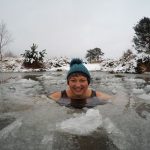Outdoor swimming Safety and Risk Assessment
What you need to know before you swim outdoors
Before we had swimming pools, everyone one swam outside. After generations of plodding up and down between lane ropes we’ve been conditioned to think swimming in tanks is normal. But it’s not. Now, thousands of people are rediscovering the joys and freedom of swimming outside in natural bodies of water. One thing swimming pools have going for them is that they are controlled and safe environments. When you venture outside, it’s different. You can’t leap unthinkingly into your local river as you might into a pool. You’re back in nature. Which is fabulous, but you need to respect it. The more you know, the safer you’ll be.
Top tips for staying safe in open water
- Think before you swim. Check your entry and exit points and take into account currents and tides
- Don’t mix swimming and alcohol
- Swim with other people – ideally that know the area and have swum in open water before
- Don’t jump in. Enter the water slowly to prevent ‘cold water shock’
- Let people know where you are and what you’re doing (e.g. inform beach lifeguards or even the coast guard if planning a long coastal swim)
- Make sure you’re visible in the water. Wear a brightly coloured cap and consider using a tow-float
- If someone gets in trouble, don’t put yourself at risk but call for help – dial 999 or 112
- If you find yourself in difficulty FLOAT TO LIVE
Detailed safety advice
Water temperature
Compared to indoor heated swimming pools, which vary in temperature from around 26 to 31 degrees Celsius, you are likely to be exposed to a much wider range of temperatures when swimming outside. In the UK, inland waters can be as low as zero in winter to as high as the mid 20s in peak summer. Coastal waters vary from low single digits to the high teens. The water temperature has a massive impact on how you swim and how long you can safely stay in the water.
For the inexperienced, the biggest danger from sudden immersion in water that’s significantly cooler than you’re used to is cold water shock. This is the body’s initial and automatic response to rapid change in skin temperature. It causes, among other things, a sharp intake of breath, an increase in breathing rate and an increase in blood pressure. It typically lasts up to a couple of minutes. For the unwary, cold water shock can be deadly, especially if that sharp intake of breath occurs under water. In addition, if you have an underlying heart condition or hypertension then the sudden change in blood pressure may cause complications. Therefore, enter the water slowly and keep your face clear until your breathing is under control. The cold water response decreases with swimming experience and being mentally prepared.
The second problem with cold water is that it can result in swim failure. To protect vital organs in the core, the body restricts blood flow to the limbs when in cold water. If this reaches extreme levels the arms and legs no longer function properly and you can’t swim. If you feel yourself slowing down or struggling to swim, get out.
The next risk is hypothermia. This occurs when you suffer a drop in core body temperature and can eventually lead to loss of consciousness and heart failure. The amount of time you can swim in cold water without suffering from hypothermia is determined by the temperature, your body size and shape and your experience, among other factors. Start with short swims to learn what your limits are. Always swim with other people. If your stroke rate slows down or you start to shiver, get out and warm up.

When you finish swimming, you also need to concern yourself with something called ‘after drop’. This happens after you exit the water as your core continues to cool. This is believed to be a conduction effect as a cold front moves through your body from the outer layers to the inner core. This is why you often start to shiver a few minutes after you finish swimming. To minimise the risk, dress immediately starting with the top half of your body. Put on a hat and gloves and have a warm (non-alcoholic) drink.
A wetsuit will not prevent cold water shock nor stop you from suffering hypothermia. However, it will help you to stay warmer for much longer, keep you afloat and, in most cases, allow you to swim faster.
Also bear in mind that the water near the surface, especially on hot sunny days, can be much warmer than the water below.
A brief guide to water temperatures in open water
| Temperature | Technical term | Description |
|---|---|---|
| 0 to 5 degrees. | Bloody freezing | The preferred temperature for extreme winter swimmers. Causes pain and takes your breath away. Except for the very experienced, and only under strict supervision, swims should be limited to a few minutes. Enjoy the buzz when you get out. |
| 5 to 10 degrees | Effing cold | Typical lake and river temperature in early spring. Still painfully cold and not recommended for anything other than very short swims (5 to 10 minutes) unless you are very experienced. |
| 10 to 15 degrees | Nippy or ‘not as warm as we like it’ | Open water starts reaching these temperatures in late spring around much of the UK. At the lower ends, it will still feel extremely cold initially but longer swims are now possible. Experienced swimmers can manage several hours or more as the water approaches the mid teens but hypothermia is still a big risk. |
| 15 to 20 degrees | Alright (once you get used to it) | The English Channel in summer. If you’ve only ever swum in a pool, this will feel cold but with a bit of experience and practice most people find this range comfortable, at least initially. |
| 20 to 25 degrees | Balmy | Rarely reached in the sea around the UK, but sometimes in inland lakes. If you’re a habitual wetsuit wearer then seriously consider removing it at these temperatures to avoid overheating. Very pleasant. |
| 25 to 30 degrees | Stifling | Like a swimming pool. Some open water swimmers find these temperatures too high for serious swimming. Make sure you have plenty to drink. Don’t wear a wetsuit. |
| 30 degrees plus | Hot | Avoid strenuous swimming as there is a definite risk of heat stroke. |
Note, swimmers have widely differing opinions about comfortable water temperatures and people’s bodies respond differently. Learn to trust your own experience and feelings.
Weather
Open water swimming is more enticing on hot sunny days but people do swim in almost all conditions, and different types of weather mean different risks you need to be aware of.
In hot weather, there may be a big contrast between the air and water temperature that can catch out the unwary and is suspected to be a cause of some open water deaths. Therefore, always enter the water cautiously. Remember that you can easily get sunburn while swimming so make sure you protect your skin with waterproof sunblock or a rash vest.
Strong winds can make swimming conditions difficult. The water can be particularly unsettled if wind is blowing in the opposite direction to the current. Learning to breathe on both sides can help you cope better with waves and chop. Also be aware that a strong breeze increases the wind chill factor and you may get cold quicker than you expect. Finally, wind can make it difficult for support boats, which is why events are sometimes cancelled.
Swimming in the rain is no problem – you’re wet anyway – and it can even be very enjoyable to feel the drops on your back and to watch the water surface. Make sure you keep your clothes and towel somewhere dry for afterwards and be aware that conditions in some rivers can change rapidly when it rains. Heavy rain can wash pollutants off the land into the water and cause storm overflows to spill into rivers so it might be prudent to avoid certain rivers during or after heavy rain. You should leave the water if there’s any danger of an electrical storm.
Tides and currents
The tidal range around some parts of the UK is truly staggering. In the Severn Estuary the water level can change by as much as 15 metres over the course of six hours. This means a beach you walked across to start swimming might be gone when you want to stop. It might mean a ladder you descended to get in the water is now out of reach. It is therefore essential to pay attention and seek local knowledge when swimming in the sea or the tidal reaches of any rivers. The tide also generates currents. If you look at the path of a swimmer crossing the English Channel you can see very clearly how far a current might carry you in a few hours, and that those currents change direction with the changing of the tide. A strong current can easily prevent you reaching where you want to swim.
Also beware of rip currents in the sea. These are currents flowing out to sea and can carry the unwary far from the beach in a short space of time. Rip currents occur when the water from waves crashing on the beach sweeps back to sea through a narrow channel (e.g. a break in a sandbar below the surface). The current stream can be relatively narrow – perhaps just 10m or so across – but too fast moving to swim against. The way to escape is to swim parallel to the shore until you are out of the current and then swim back.
Currents in rivers are usually easier to spot and predict but can also be problematic for the unwary. For example, a strong current may carry you away from your entry and exit point, and very strong currents can pin you against obstacles such as overhanging branches.
Note that the current will flow upstream at times in tidal sections of rivers and in estuaries. If a river has an upstream dam, it may be subject to sudden changes in flow rate if water is released.
The key message here is to pay attention, observe the situation, take advice from local swimmers and plan accordingly. With good planning there is no reason why you shouldn’t take advantage of tides and currents to add a new dimension to your swimming.
Other hazards for the unwary in open water
The message we want to reiterate is that to be safe in open water you need to think ahead and to stay alert. In our view, the benefits of open water swimming far outweigh the risks but you should be aware of the potential hazards and take steps to minimise their possible harm. We can’t cover every eventuality here but the table below highlights some of the more common risks or perceived dangers that we haven’t covered above, and what to do about them.
| Risk | What is it? | How do you manage it? |
|---|---|---|
| Cuts, bruises and breakages. | You’re most at risk when walking to or into the water or if you jump or dive in without checking the depth. Sharp stones or broken glass are common hazards. | Wear flip flops to the water’s edge and consider neoprene socks. Pay attention where you put your feet and always look before you leap. Be careful of waves breaking onto rocks. |
| Cramp | Cramp occurs when your muscles go into spasm. It can be very painful and disabling. Some people are more prone to it than others and it seems to be more likely if your muscles are tired, for example if you’ve been running before swimming. | Minimise the risk by learning what triggers cramp (e.g. sudden changes of pace, swimming butterfly). Swim with other people so if you do get cramp, they can help you. Consider using a tow float to rest on in case of emergency. |
| Weeds | Getting ‘dragged down by weeds’ is a common fear for beginners but is extremely unlikely. Nevertheless, pond weed and other plants can impede your swimming and possibly induce panic, which may result in drowning. | Stay calm. Weeds do not try to pull you down. In most cases you can gently extract yourself. It is usually preferable to swim in deeper water where you have fewer contacts with plants. |
| Getting stuck in the water | It’s not unheard of for people to start swimming and only later realise they can’t get out – for example, if they have swum from one place to another without checking their exit point. | Always plan your exit before you get into the water. Be aware of local conditions and how tides and changes in water level might affect your exit from the water. Before you enter the water, check for ladders, steps or alternative exit routes if your planned exit becomes unavailable. |
| Weil’s disease | Weil’s disease is the name given to a severe case of leptospirosis, a bacterial infection (caused by bacteria called leptospira) that is spread by animals and can affect people. It is particularly associated with rats but it is also known to be carried by cattle, pigs, foxes, badgers and dogs. You can catch it through contact with soil or water that’s been contaminated by urine from affected animals. That means swimmers are at risk. In 2014 there were 76 reported cases of leptospirosis (not the more severe Weil’s disease) in the UK, according to data from Public Health England. Find out more about Weil’s diesease | Public Health England says: “In the UK, cases of leptospirosis are uncommon. There is no reason why people should not participate in freshwater activities such as swimming, sailing, water skiing or windsurfing, but we advise people to take simple precautions to reduce their risk of infection before engaging in these leisure pursuits. Practical measures swimmers can take include minimising the swallowing of water, showering soon after swimming and washing hands before eating.” |
| Other waterborne illnesses | Any time we enter the water we run the risk of picking up a parasitic, viral or bacterial infection. In the UK, the most common are bugs that cause vomiting and diarrhoea. These are usually mild and self-limiting. | In the sea, use beaches that meet bathing water standards. In inland waters you need to rely more on your own judgement and the experience of other swimmers. Avoid swimming in rivers after heavy rainfall that might wash contaminants or sewage into the water. |
| Collision / being run down | Swimmers are hard to spot in the water, especially if the light is poor and they are wearing black wetsuits. Rowers, kayakers, jet ski riders and boat pilots often don’t expect to come across swimmers and may not particularly be looking out for them. A collision will almost certainly be worse for the swimmer. | Stay alert. Consider swimming where there’s less traffic. Wear a bright coloured cap. Drag a tow float behind you. Swim with a kayaker displaying an alpha flag. Be careful. |
| Jellyfish | Beautiful sea creatures that can give you a nasty sting. Usually painful rather than dangerous but multiple stings can be debilitating and some people have allergic reactions. | Avoid if you can. Some sun creams include an anti-jellyfish ingredient but we’ve not tested it so can’t vouch for its effectiveness. The initial pain usually eases after a few minutes if you keep swimming. Seek medical help if you sense any difficulty in breathing. |
| Sharks | Beautiful, intelligent, endangered, deadly. Actually, very few species of sharks are dangerous to people and many more sharks are killed by people than vice versa. Shark attacks are extremely rare but still preferably avoided. | Don’t swim where sharks feed (e.g. next to seal breeding colonies). If you are swimming where sharks are consider using an electronic shark shield. Make sure your support crew stays vigilant. |
Commercial open water swimming venues
One of the joys of swimming outside is the opportunity to indulge your wild side and explore new locations from the water. However, swimming in new and unsupervised locations increases the risks. This doesn’t mean you can’t or shouldn’t swim in these places (in fact, there are some amazing spots, and we’d recommend getting one of the many guides out there to help you find them) but you might want to begin you open water swimming journey at a recognised commercial swimming venue.
In the UK, there are currently around 100 such venues, usually at lakes or docks, where you pay around £5 to £10 to swim. Good venues will have lifeguards both on the shore and in the water, there will be safe and easy access to the water, there may be alternative exit points (e.g. safety ladders) around the course in case of emergency, they may offer swim coaching services or introductory sessions to get you started and there will usually be plenty of other people around to help you if you get into difficulty. They should also test the water quality, ensure there are no hidden obstacles under the water and keep track of who is in the water at any time. Many also have changing facilities, toilets and a café or provide a hot drinks service. The main downsides are restricted opening hours (as many are on private property you can’t just rock up and swim whenever you like) and you are usually restricted to swimming pre-defined circuits.








